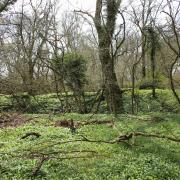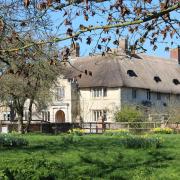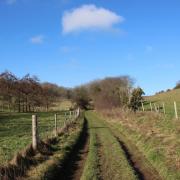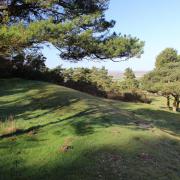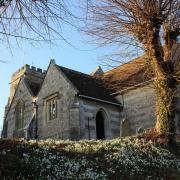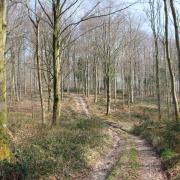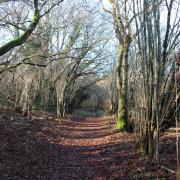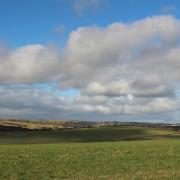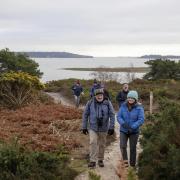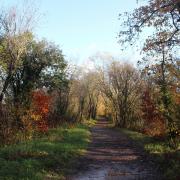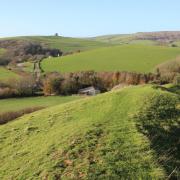Edward Griffiths explores old Christchurch, uncovering some of its historical places and fascinating people
Details
• Distance: 1½ miles (2.5 km)
• Time: 2 hours
• Exertion: Easy
• Start: Place Mill on Christchurch Quay (Grid Ref: Z160923)
• Map: OS Landranger Sheet 195
• Public Transport: Yellow Buses 21 and 33 to High Street, Damory Coaches 324
• Dogs: On leads at all times during this urban walk
• Refreshments: Christchurch has plenty of pubs and cafés
The walk
1. From Place Mill, go through the gateway into the car park and continue past right Christchurch Priory Porter’s Lodge into Quay Road. The first brick building on the left is the old Parish Workhouse. In use until 1885, it is now the Red House Museum. At Church Lane T-junction, facing Sundial Cottage, turn left and first right into Silver Street with its lovely old cottages. At the end, turn left into Wick Lane. In 50 yards, take right Creedy Path, the cycleway and footpath passing the right car park and Druitt Gardens. Reaching Sopers Lane, cross the pedestrian crossing into Barrack Road Recreation Grounds. Follow the footpath. Just past the right Play Area, turn right across the grass to another path. With the long white Community Centre building left, continue past ’tropical’ trees into Barrack Road. Between the 18th and 20th centuries, the area taken up by the opposite car park and the roundabout was the most congested part of Christchurch, with many thatched cottages and alehouses. Fifty homes were destroyed by the 1826 fire but these were rebuilt, finally being removed during slum clearance and road-building in the 1950s.
2. Cross over, using the refuge. Walk past the left car park into ‘Bargates’. On the refuge, the red marble fountain commemorates Samuel Bemister, the five-times Mayor who died in 1900. Continue along Bargates for 100 yards to the left white-pillared driveway. At the end, Number 20a is the 1815 building where watch fusee chains were made, the last remaining purpose-built fusee chain factory anywhere. Cross over Bargates and walk towards the roundabout. Around the left bend, go through the underpass. Emerge into The Pound, where stray farm animals were confined awaiting collection. Turn right and left into High Street.
3. In 200 yards, the brick and stone Town Hall was first built in 1746 at the junction of High Street and Castle Street but was rebuilt here in 1860. Opposite is the Masonic Hall, built by draper Samuel Bayley in 1837, with the arched doorway and the urn on top. Next door is the Library, built in 1844 as Solicitor James Druitt’s home. Druitt, also, was five times Mayor. Also opposite are the art deco Regent Centre, opened as a cinema in 1931 and still Christchurch’s premier entertainment venue, and Kelly’s Kitchen, built in 1843, with the attractive ladies’ faces supporting the upstairs windows’ pediments. Reaching the mini-roundabout, turn left into Castle Street and pass the Olde George Inn.
4. Go left into the passageway signed ‘Ducking Stool’. Past some country-style cottages, cross Millhams Lane into Ducking Stool Lane. Ducking stools were used as punishment for brawling women and ‘scolds’, dating back to the 14th century in Christchurch. Return to Millhams Lane and turn left. At Castle Street, turn left. Reach left Kings Arms Hotel, formerly popular with wealthy visitors to the nearby Georgian watering place of Mudeford. Now, cross over and double back to the black-and-white ‘Old Perfumery’, probably the oldest building in Christchurch, having been owned by Christchurch Borough for over 600 years. Turn into the path before the perfumery. The Norman castle was captured by the Parliamentarians during the Civil War. At this time, the filled-in moat was re-dug, taking part of the perfumery’s garden with it.
5. Go through the left gates into the bowling green to visit the Lord of the Manor’s Constable’s house, built in the 12th century providing more salubrious accommodation than the castle could offer. Also, view Town Bridge on the River Avon. This five-arched medieval bridge was widened in 1899 to allow carriages to pass each other. Return to the castle path and, past the bowls pavilion, go through the brick-wall’s gate into the formal grounds. Follow the path, keeping the mausoleum wall left. The mausoleum was built for Mrs Perkins who died in 1783 and who, frightened of being buried alive, ordered several precautions and devices to enable her escape. Walk under the wisteria arch alongside the left mill-stream to Christchurch Priory.
6. Turn right along the priory left. The pierced parapet above you was left unfinished in 1539 because of Henry VIII’s Dissolution of the Monasteries. Leave along the right path and through the ornate iron-gates into Church Street. First right is Church Hatch, an elegant 18th-century house where, in the 1930s, publisher Walter Hutchinson had the first direct telephone line installed to his London headquarters. The house was nearly converted into shops in 1929. Continue past Ye Olde Eight Bells Shoppe, originally the first inn in Christchurch, named when the priory had just seven bells. Turn left into Church Lane, then left into Quay Road back to the car park with Place Mill beyond, where you started.
More…
• Dorset locations that feature in Broadchurch - Broadchurch is back on our screens with a gripping new storyline and some great Dorset locations, as Visit Dorset reveals




